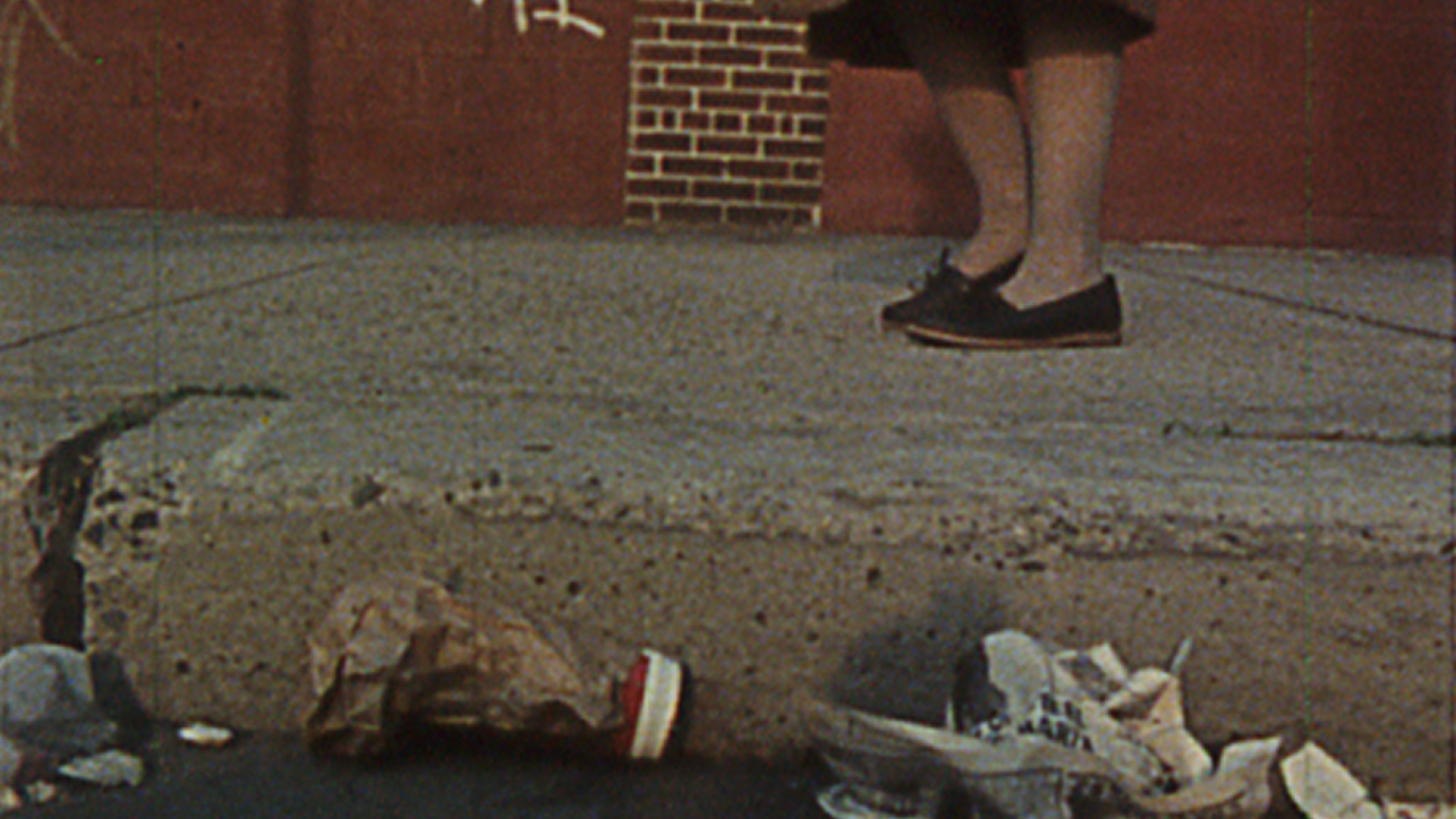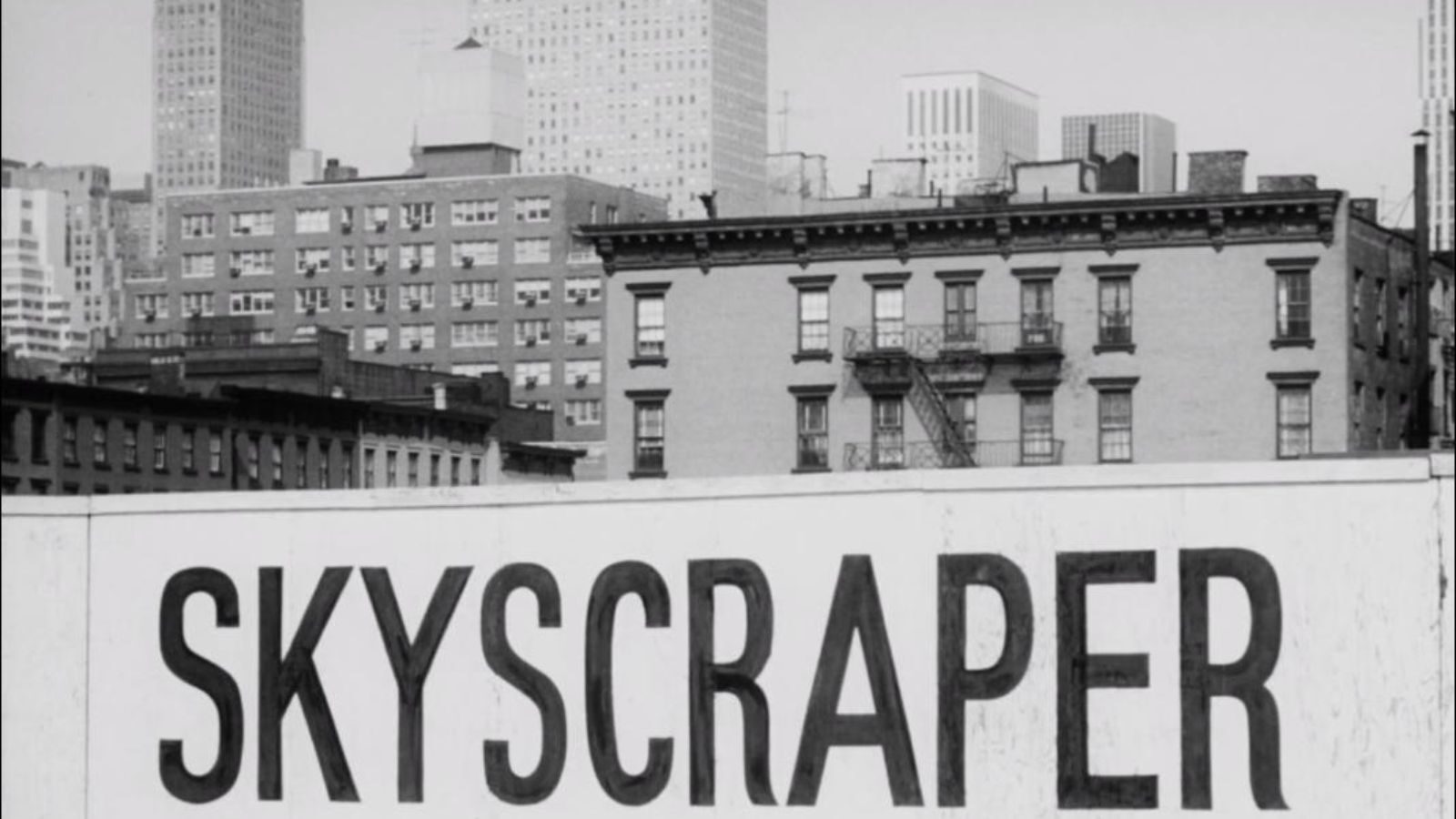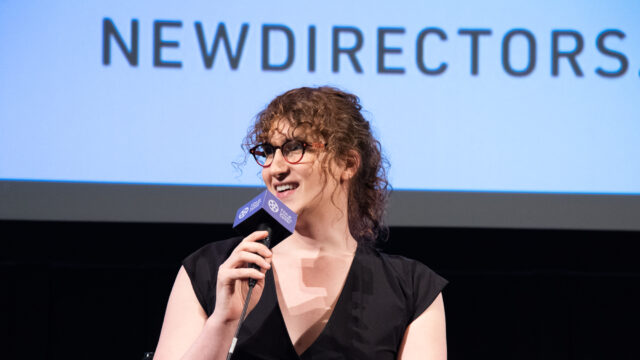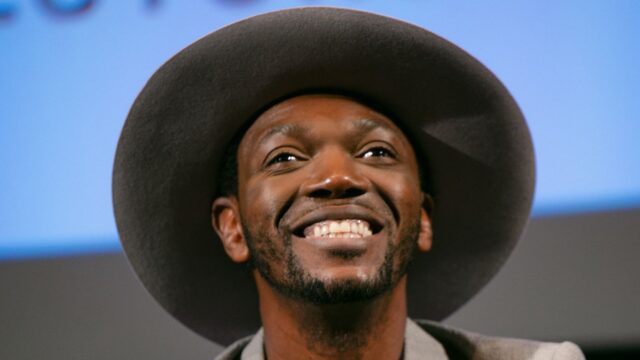Program 4: Architecture and Gendered Space
Saturday, May 4
Monday, May 6
Venue
EBM Film Center (FBT)See more and save with a 3+ Film Package or All-Access Pass
Skyscraper
Shirley Clarke, 1959, 21m
From the Ladies
Holly Fisher, 1978, 20m
Greed: Pay to Play
Bette Gordon, 1987, 16mm, 20m
The centrality of skyscraper architecture to the mythos of New York is almost tautological. So is the association of these great feats of engineering with gendered labor: hubristic, great male builders who carved up space, tamed land, and reoriented the city to become an environment predicated on hulking verticality. This program offers three films that undercut and explore the gender politics of such built environments. Shirley Clarke, a co-founder of The Film-Makers’ Cooperative, was commissioned to make Skyscraper by a raft of construction and building material firms. It documents the erecting of 666 Fifth Avenue, commonly known as the Tishman Building, designed by Carson & Lundin and built for its developer Tishman Realty and Construction from 1955 to 1957. The storied office building was categorized by Susan Sontag as an example of kitsch in arts and design, and in a similar tone Clarke described her film as a “musical comedy about the building of a skyscraper.” Clarke’s designation is confirmed by the film’s jaunty, lightly mocking soundtrack, comprised of whimsical songs and fabricated dialogue that skews the gender makeup of the construction crew, the bureaucracy involved in the building’s planning and creation, and the homogeneity of the architectural style the team is laboring toward.
Accompanying Clarke’s work are two films set inside the public restrooms of skyscrapers. Filmed in the multiple-mirrored women’s powder room of the city’s then-only Holiday Inn, Holly Fisher’s film From the Ladies is a subtle, deconstructive work that makes strange the quotidian perceptual experience of visiting a gendered space clearly designed by a man. Fisher later described the location and her experience filming there as “a space designed exclusively for me (being a woman), which seemed simultaneously seductive and vulgar, and in which the most visible object was myself looking at myself with Bolex in hand. Looking at From the Ladies is an orchestration of tensions from this play between myself as filmmaker-subject, object, and woman. Filmmaker at play with the gaze, so to speak.” Bearing the hallmarks of her feature-length work, a thriller-inflected feminist unpacking of film genre, Bette Gordon’s Greed: Pay to Play, similarly set in a hotel bathroom, offers semi-narrative, surrealist-tinged psychodrama in the tradition of the midcentury avant-garde. Gordon has written of the film: “Three women have a strange claustrophobic encounter in the ladies lounge of a luxurious Manhattan hotel. Set in a timeless ‘twilight zone’ where objects bear a menacing aura and seemingly harmless conversation carries a threatening subtext.”








